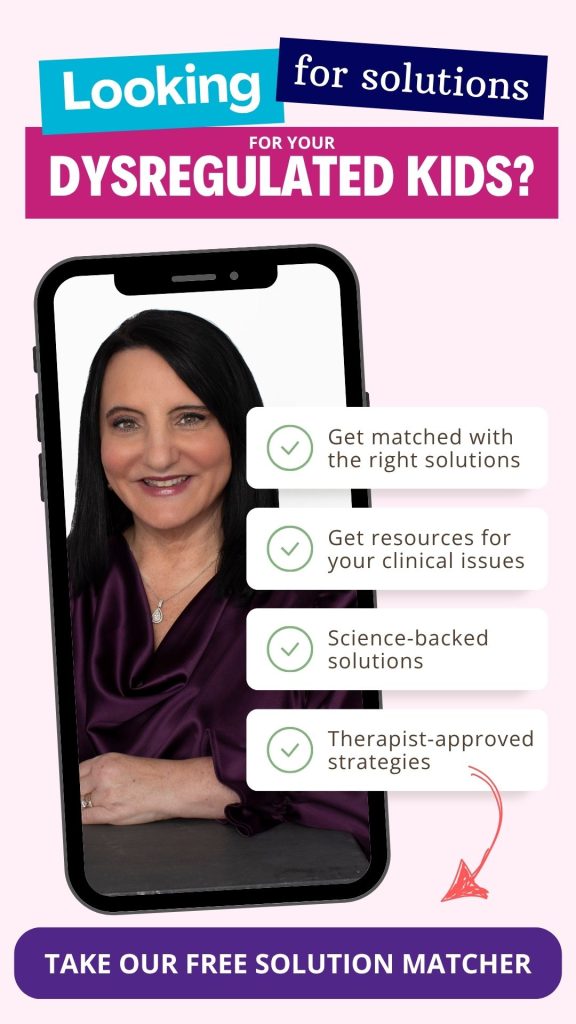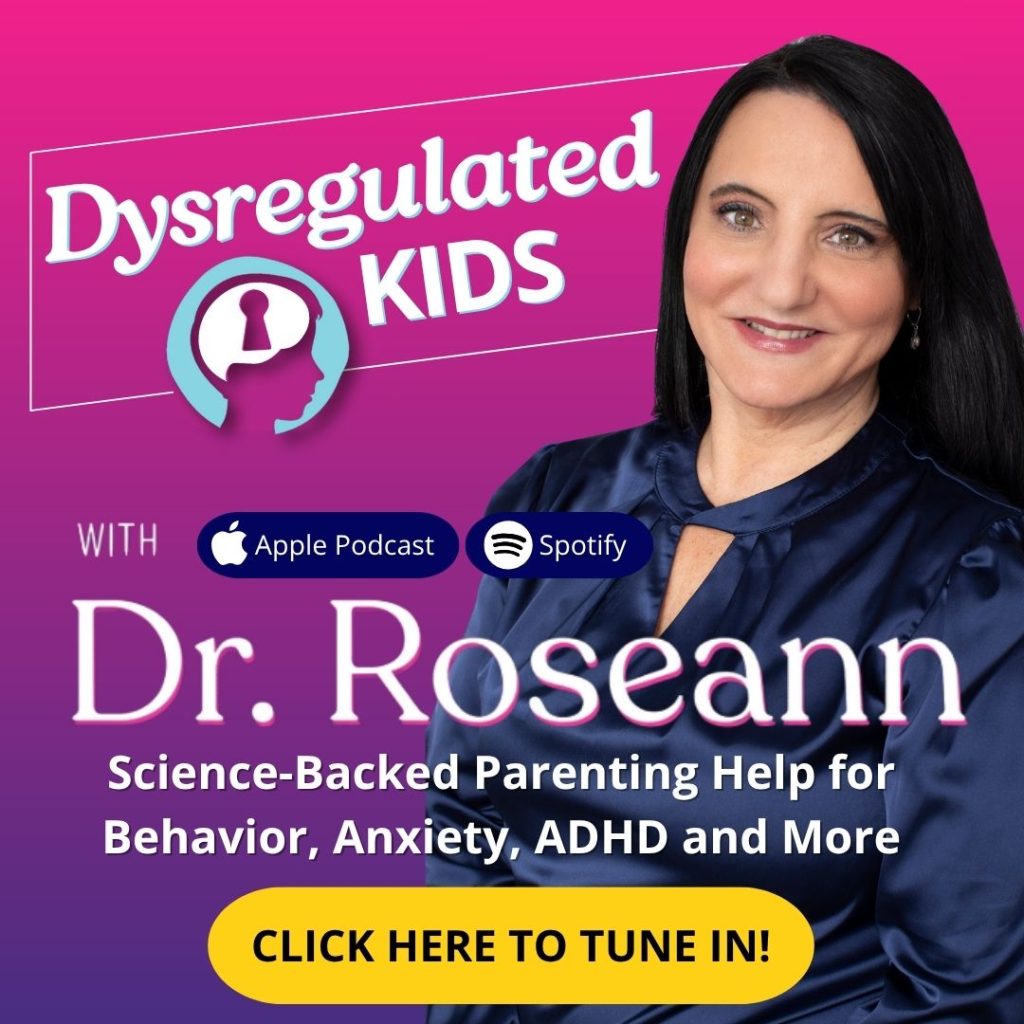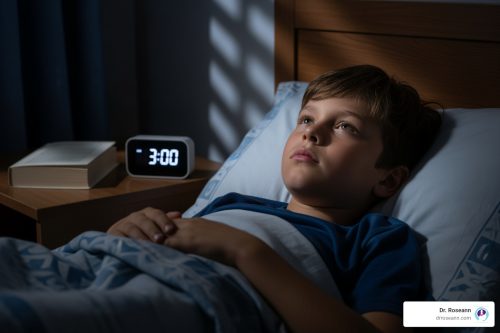You may have heard there are “different types” of ADHD, but what do those labels really mean for your child?
ADHD isn’t one-size-fits-all. Understanding whether your child has the Inattentive, Hyperactive-Impulsive, or Combined type can help you see what’s really driving their behavior — and what kind of support will actually help.
In this guide, you’ll learn how each type of ADHD shows up at home and school, what the brain is doing beneath the surface, and how a regulation-first approach can calm symptoms so your child can thrive.
Three Types of ADHD
ADHD is diagnosed by pattern—consistent symptoms that cause impairment in more than one setting (home, school, activities) and start in childhood. The DSM-5-TR describes three presentations (what many parents call “types”):
- Predominantly Inattentive (difficulty sustaining focus, organization, follow-through)
- Predominantly Hyperactive-Impulsive (restlessness, impulsivity, interrupting, blurting out answers)
- Combined (both inattentive and hyperactive-impulsive symptoms)
Parent lens: Think of presentations as the shape symptoms take. Labels don’t define your child—they help you target supports.
“ADHD can profoundly affect children’s academic achievement, well-being, and social interactions.” — Wolraich et al., 2019
How Does Inattentive ADHD Looks Like?
Kids with inattentive ADHD are often described as bright but “spacey.”
You may notice that your child has trouble paying attention for extended periods or focusing on details. They may also lose homework or say ‘I forgot’ even when they mean well.
Real-life example:
Karl, a teen I worked with, could focus for only 10–15 minutes before his attention slipped. With regulation-first support and brain-based therapies, he gradually stretched his attention and rebuilt confidence.
Takeaway: Behavior is communication. Look underneath the struggle and start by calming the nervous system.
Quick Helps
- Regulate → Connect → Correct.™ Start with a regulating breath or movement break; then coach the next steps.
- Break work into sprints (10–15 minutes) with micro-breaks.
- Use visual checklists and a single planner; teach “plan first, then start.”
- Co-regulation strategies: calm voice, one direction at a time, and frequent, brief positive feedback.
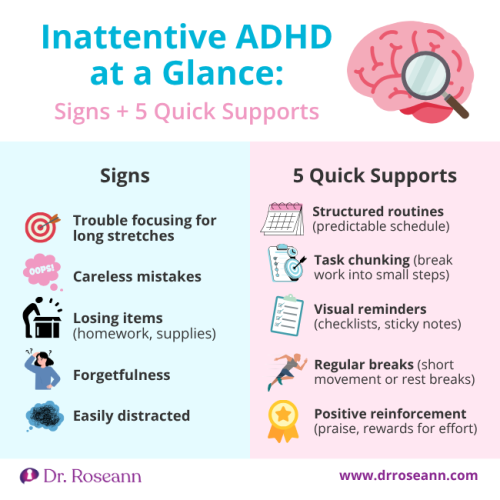
How Is Hyperactive-Impulsive ADHD Different From “High Energy”?
Hyperactive-impulsive ADHD is more than energy. Dysregulation can look like constant movement, fidgeting, nonstop talking, blurting, and trouble waiting. Kids may act before thinking, then feel bad afterward.
Parent lens: Your child isn’t “choosing” to be disruptive. Their brain is revved. Let’s calm the brain first.
Quick Helps
- Movement diet: frequent, planned movement (wall push-ups, heavy work, quick errand).
- Impulse guards: “pause words,” fidgets used on purpose, and role-played scripts for waiting.
- Structured routines and clear, brief directions.
- Positive reinforcement for desired behaviors you want repeated.
Parent story:
Miguel, 8 years old, couldn’t stay in his seat for more than a few minutes. The constant reminders and redirections left everyone frustrated — him, his teacher, and his parents.
Together, they added movement breaks every 20 minutes and created a simple “secret signal” with his teacher to cue him before he got too wiggly. Within weeks, the number of disruptions dropped by half, and Miguel felt more in control — and proud of himself.
Takeaway: Predictable outlets reduce impulsive bursts.
What Is Combined-Type ADHD?
Combined type ADHD means your child shows both inattentive and hyperactive-impulsive symptoms.
It can be toughest because distractions and impulses collide. This leads to missed instructions, lost items, and social slip-ups.
Look for:
- Struggles with executive function (planning, organization, time).
- Big feelings + restless energy that ramps up under stress.
- School issues and home battles—because demands change across settings.
“Misconceptions about ADHD stigmatize affected people and delay treatment.” — Faraone et al., 2021
Parent lens: Combined type isn’t “worse,” it’s just more layered—so your plan should be, too.
Evidence-Based Treatments for Each ADHD Type
No matter the presentation, the strongest research backs a multi-modal approach:
What the Evidence Supports
- Behavioral parent training (you learn tools; your child benefits) improves behavior and family stress. It’s a first-line strategy in guidelines.
- School accommodations (504/IEP) align tasks with your child’s regulation and learning profile.
- Medication can reduce core symptoms for many children. It is considered safe and effective by regulatory bodies when monitored.
- Lifestyle pillars: sleep, nutrition, exercise, and stress reduction. These are regulation multipliers I teach in my practice.
Match Supports to Presentation
- Inattentive: scaffolds for planning, visual schedules, extended time, chunking work.
- Hyperactive-impulsive: movement breaks, clear turn-taking routines, cueing systems.
- Combined: both sets—plus emotion regulation tools.
How To Support Your Child At School?
Start small and specific. Ask for supports that fit your child’s ADHD presentation and goals.
High-Impact School Accommodations
- Preferential seating and written directions.
- Chunked assignments with check-ins; extended time when warranted.
- Movement breaks and access to quiet testing spaces.
- Organizational support: one binder system; weekly clean-outs.
Parent story:
Ava’s teacher added a “first-then” card and 2 movement breaks. Meltdowns dropped, and Ava began finishing her morning work.
Takeaway: Small, consistent supports beat big overhauls.
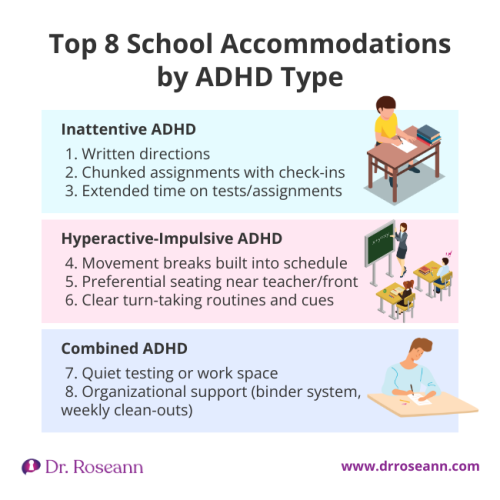
When To Seek ADHD Evaluation?
Get an evaluation if symptoms persist for more than six months and occur in more than one setting. Look for signs that they are hurting in learning, relationships, or self-esteem.
Start with your pediatrician. Then consider consulting a psychologist or neuropsychologist for more comprehensive testing.
Clinicians don’t rely on one test to diagnose ADHD. They use rating scales, history, and observations from parents and teachers.
Pro tip: Bring examples (unfinished work, teacher emails) and note what helps—that data speeds effective planning.
Will Neurofeedback, Supplements, or PEMF Help?
Families often ask about natural tools. Here’s what current research says:
- Neurofeedback: A 2024 systematic review and meta-analysis (38 RCTs) found that, on blinded ratings, neurofeedback did not show meaningful benefits as a stand-alone ADHD treatment, though small effects appeared with standard protocols on processing speed outcomes (Westwood et al., 2025). It may be best considered an adjunct for select children.
- Supplements & PEMF: Some children experience calming with targeted nutrients and gentle neuromodulation tools. Evidence is still emerging; partner with a clinician who can individualize care and monitor
My take (Regulation First Parenting™):
If you’re curious about these tools, embed them in a whole-child plan. Include behavioral parent training, co-regulation strategies, and school accommodations. And track what moves the needle for your child.
Finding Hope and Next Steps
You’ve just learned about the types of ADHD, how they manifest at home and school, and which supports are most helpful. You are not alone.
Start with regulation—Regulate → Connect → Correct™—then add parent training, school supports. When needed, ask for professional treatments. With the right plan and steady support, it’s gonna be OK.
Explore our ADHD Treatment resources now to start calming your child’s brain today.
FAQs
How can I tell if it’s ADHD or anxiety?
They can co-occur. ADHD shows persistent attention/impulse/energy patterns across settings; anxiety shows worry-driven avoidance or perfectionism. A good evaluation screens for both.
Can girls have inattentive ADHD without being “hyper”?
Yes—inattentive ADHD symptoms often look like daydreaming or quiet disorganization, which can be missed. Trust your gut and request screening.
Do kids “grow out of” ADHD?
Many continue to have symptoms into adulthood, but with the right supports, they build skills and thrive. Behavioral parent training and school supports create momentum now.
Will accommodations make my child dependent?
No. They reduce barriers so your child can learn. As skills grow, accommodations can be adjusted.
Citations
Faraone, S. V., Banaschewski, T., Coghill, D., Zheng, Y., Biederman, J., Bellgrove, M. A., … Wang, Y. (2021). The World Federation of ADHD International Consensus Statement: 208 evidence-based conclusions about the disorder. Neuroscience & Biobehavioral Reviews, 128, 789–818. https://doi.org/10.1016/j.neubiorev.2021.01.022
Westwood, S. J., Aggensteiner, P., Kaiser, A., et al. (2025). Neurofeedback for attention-deficit/hyperactivity disorder: A systematic review and meta-analysis. JAMA Psychiatry, 82(2), 118-129. https://doi.org/10.1001/jamapsychiatry.2024.3702
Wolraich, M. L., Hagan, J. F., Allan, C., et al. (2019). Clinical practice guideline for the diagnosis, evaluation, and treatment of attention-deficit/hyperactivity disorder in children and adolescents. Pediatrics, 144(4): e20192528. https://doi.org/10.1542/peds.2019-2528
Always remember… “Calm Brain, Happy Family™”
Disclaimer: This article is not intended to give health advice, and it is recommended to consult with a physician before beginning any new wellness regimen. The effectiveness of diagnosis and treatment varies by patient and condition. Dr. Roseann Capanna-Hodge, LLC, does not guarantee specific results.
Are you looking for SOLUTIONS for your struggling child or teen?
Dr. Roseann and her team are all about science-backed solutions, so you are in the right place!
©Roseann Capanna-Hodge




